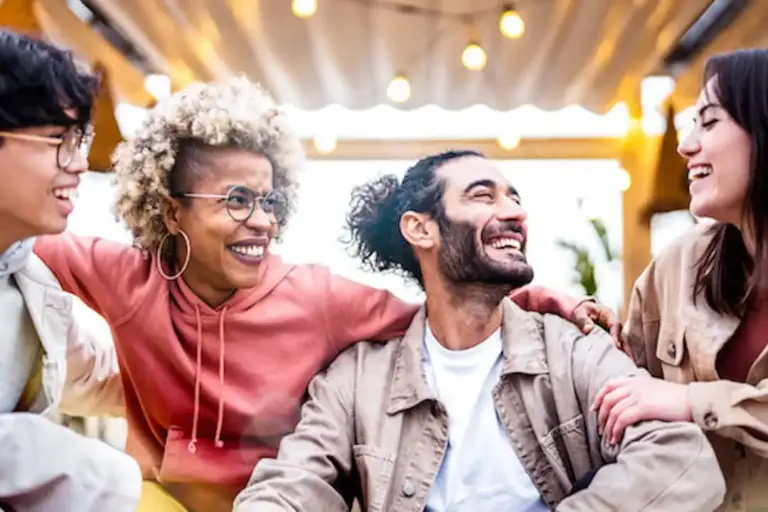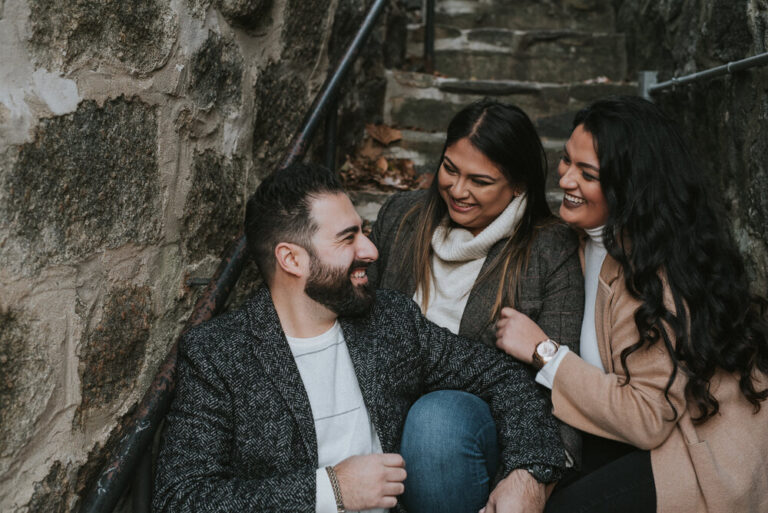Polyamory and LGBTQ+ Relationships: Intersectionality and Inclusivity
Polyamory, the practice of having multiple consensual romantic or intimate relationships simultaneously, and LGBTQ+ relationships share a common thread of challenging societal norms and expanding the understanding of love and relationships. This blog explores the intersectionality of polyamory and LGBTQ+ relationships, emphasizing the importance of inclusivity and embracing the diverse experiences within these communities. By acknowledging and addressing the unique challenges and opportunities that arise, we can foster a more inclusive and supportive environment for all individuals.
Understanding Polyamory and LGBTQ+ Relationships
Polyamory challenges the traditional societal expectation of monogamy by allowing individuals to engage in multiple consensual relationships simultaneously. It emphasizes open communication, trust, and ethical non-monogamy. LGBTQ+ relationships encompass a wide spectrum of identities and orientations within the lesbian, gay, bisexual, transgender, and queer communities. These relationships also challenge societal norms by embracing diverse expressions of love, gender, and sexuality.
Intersectionality: Overlapping Identities and Experiences
Exploring Overlapping Identities
Many individuals within the LGBTQ+ community are also involved in polyamorous relationships. Understanding the intersectionality of these identities is essential to acknowledge the unique challenges faced by LGBTQ+ individuals who practice polyamory. This intersectionality recognizes that individuals can experience multiple forms of marginalization and discrimination.
Navigating Stigma and Stereotypes
LGBTQ+ individuals may encounter additional societal stigma and prejudice when engaging in non-monogamous relationships. This intersectionality demands sensitivity and support to create inclusive spaces that validate the lived experiences of individuals navigating multiple marginalized identities. It is important to challenge stereotypes and misconceptions associated with both polyamory and LGBTQ+ relationships.
Inclusivity within Polyamorous and LGBTQ+ Communities
Challenging Heteronormativity and Mononormativity
Recognizing and challenging the dominance of heteronormative (the assumption of heterosexuality as the norm) and mononormative (the assumption of monogamy as the norm) narratives is crucial for creating inclusive spaces within polyamorous and LGBTQ+ communities. Embracing diverse relationship structures and resisting prescriptive notions of love and commitment fosters inclusivity and allows for the validation of a range of relationship orientations and dynamics.
Supporting Intersectional Perspectives
Embracing intersectionality means recognizing the diverse experiences of individuals who belong to both the LGBTQ+ and polyamorous communities. This includes validating the experiences of LGBTQ+ individuals in polyamorous relationships and advocating for their visibility and inclusion. It is important to create supportive and affirming spaces where individuals can navigate their intersecting identities and experiences without facing judgment or exclusion.
Educating and Raising Awareness
Promoting education and awareness about polyamory and LGBTQ+ relationships is vital to combatting stigma and misconceptions. By providing accurate information, dispelling myths, and challenging biases, we can foster understanding and empathy, promoting inclusivity within these communities. Open discussions, workshops, and resources can help create a more supportive and accepting environment for individuals practicing polyamory within the LGBTQ+ community.

FAQs
FAQs (Frequently Asked Questions) about Polyamory and LGBTQ+ Relationships: Intersectionality and Inclusivity
What is the intersectionality between polyamory and LGBTQ+ relationships?
The intersectionality between polyamory and LGBTQ+ relationships refers to individuals who identify as part of the LGBTQ+ community and also practice ethical non-monogamy. It acknowledges the unique experiences and challenges faced by LGBTQ+ individuals who engage in polyamorous relationships.
How can polyamory and LGBTQ+ relationships challenge societal norms?
Polyamory challenges the traditional expectation of monogamy, while LGBTQ+ relationships challenge heteronormative assumptions. Both challenge the normative ideas of love, relationships, and gender roles, allowing individuals to explore diverse expressions of love, intimacy, and identity.
What are some common challenges faced by individuals in polyamorous LGBTQ+ relationships?
Individuals in polyamorous LGBTQ+ relationships may face additional stigma, prejudice, and misconceptions due to the intersectionality of their identities. They may navigate challenges such as societal judgment, lack of understanding from family and friends, and stereotypes associated with both non-monogamy and being LGBTQ+.
How can inclusivity be promoted within polyamorous and LGBTQ+ communities?
Inclusivity can be promoted within polyamorous and LGBTQ+ communities by challenging heteronormative and mononormative narratives, supporting intersectional perspectives, and providing education and awareness. It involves creating spaces that validate diverse relationship structures and identities, fostering understanding, empathy, and acceptance.
How can individuals in polyamorous LGBTQ+ relationships navigate stigma and stereotypes?
Navigating stigma and stereotypes in polyamorous LGBTQ+ relationships requires building strong support networks, engaging in open and honest communication, and seeking out inclusive communities and resources. Sharing experiences, educating others, and advocating for visibility can also help challenge misconceptions and reduce prejudice.
What role does communication play in maintaining healthy polyamorous LGBTQ+ relationships?
Communication is essential in maintaining healthy polyamorous LGBTQ+ relationships. It helps establish and negotiate boundaries, express needs and desires, and navigate potential conflicts. Open and honest communication allows partners to understand each other’s experiences and ensure everyone’s emotional well-being and consent.
How can allies support individuals in polyamorous LGBTQ+ relationships?
Allies can support individuals in polyamorous LGBTQ+ relationships by educating themselves about non-monogamy and LGBTQ+ issues, challenging their own biases and assumptions, and actively creating inclusive and affirming spaces. Listening, offering support, and standing up against discrimination contribute to a more inclusive environment for all individuals in these communities.
Conclusion
Recognizing the intersectionality of polyamory and LGBTQ+ relationships is crucial for creating inclusive and supportive spaces. By challenging heteronormativity and mononormativity, supporting intersectional perspectives, and promoting education and awareness, we can foster an environment that embraces the diverse experiences and identities within these communities. Inclusivity allows individuals to navigate their relationships authentically and without fear of judgment or exclusion, leading to greater acceptance and well-being for all.
Explore Together – A World of Infinite Possibilities and Unbridled Joy
Dive into a vibrant community where every connection is a journey to deeper understanding and boundless happiness. At the heart of our exploration lies the chance to discover not just others, but also yourself in the most colorful and inclusive ways. We’re excited to welcome you to embark on this adventure of a lifetime, where every story is celebrated, and every relationship is a testament to freedom and love. Sign up for your free SwingTowns account today, and let the exploration into the endless possibilities of polyamory and LGBTQ+ relationships begin!
“Swingtowns.com has been one of the best places for meeting like minded and fun party people. I’m always looking to meet new people and this site never fails.” -PoundnSand
Also Read: Why, darling, what green eyes you have! Five tips for supporting a partner who is feeling jealous.







